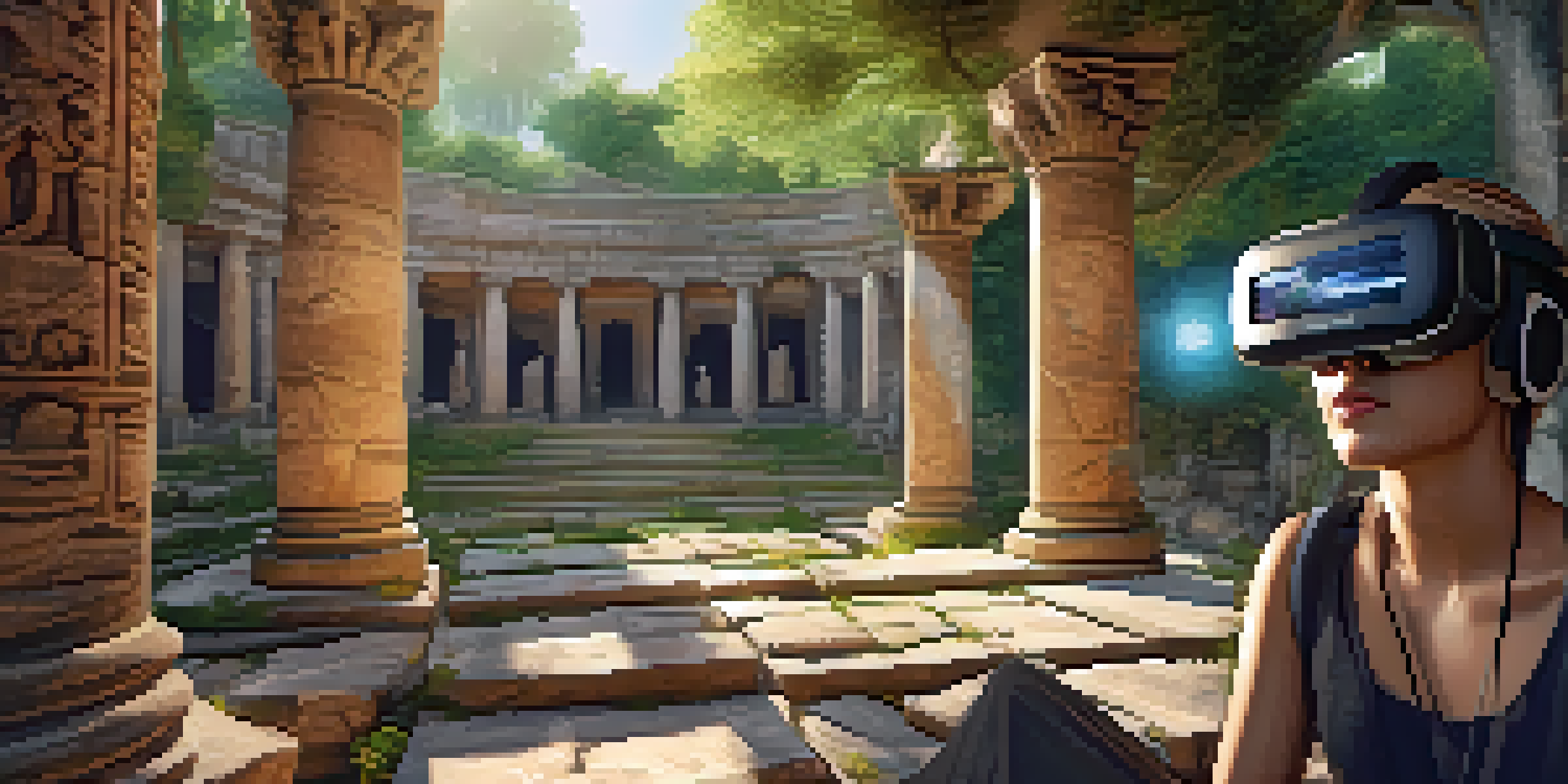The Role of Virtual Reality in Online Learning Communities

Understanding Virtual Reality in Education
Virtual reality (VR) immerses users in a simulated environment, creating an interactive learning experience. In education, it offers a unique way to visualize complex concepts, allowing learners to explore subjects like science or history in an engaging manner. For instance, students can walk through ancient ruins or conduct virtual chemistry experiments, providing a hands-on approach that traditional methods lack.
Enhancing Engagement Through Immersive Experiences
One of the key benefits of VR in online learning communities is heightened engagement. When learners are immersed in a captivating environment, they are more likely to stay focused and retain information. Imagine studying marine biology while virtually diving into the ocean—this level of engagement makes learning memorable and enjoyable.
VR Enhances Learning Engagement
Virtual reality captivates learners by immersing them in unique environments, making complex subjects easier to grasp.
Fostering Collaboration in Virtual Spaces
Virtual reality also transforms collaboration among learners. In VR, students can meet in shared spaces, regardless of their physical locations, to work on projects together or participate in discussions. This not only breaks down geographical barriers but also encourages teamwork and the exchange of diverse ideas, enriching the learning experience.
Meeting Diverse Learning Needs with VR
Every learner is unique, and VR can cater to various learning styles. Visual learners benefit from immersive visuals, while kinesthetic learners can practice skills in a safe environment. By offering customizable experiences, VR ensures that all students can engage with the material in a way that resonates with them.
Collaboration Beyond Geographical Barriers
VR fosters teamwork by allowing students to collaborate in shared virtual spaces, enhancing idea exchange and learning.
Overcoming Challenges in Online Learning
Despite its advantages, integrating VR into online learning isn't without challenges. Technical issues, such as software glitches or hardware limitations, can hinder the experience. Moreover, educators need training to effectively incorporate VR into their teaching strategies, ensuring they can maximize its potential in the classroom.
Creating a Sense of Community in Virtual Learning
One of the most significant aspects of online learning communities is the sense of belonging they foster. VR helps build this community by allowing learners to interact in real-time, creating friendships and networks. These connections can lead to increased motivation and support, making the educational journey a collaborative experience.
Measuring VR's Educational Impact
Research indicates that students using VR tend to perform better academically, highlighting its effectiveness as a learning tool.
Measuring the Effectiveness of VR in Learning
As with any educational tool, assessing the effectiveness of VR is crucial. Research shows that students who engage with VR often perform better in assessments compared to those who learn through traditional methods. This data is vital for educators to understand the impact of VR and refine their approaches to maximize learning outcomes.
The Future of Virtual Reality in Online Education
Looking ahead, the role of VR in online learning communities is poised to grow. As technology advances and becomes more accessible, we can expect even more innovative applications that enhance learning experiences. The potential for VR to transform education is immense, paving the way for a future where learning is more interactive, inclusive, and engaging.